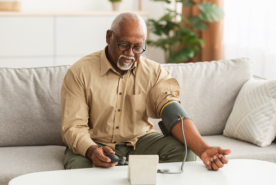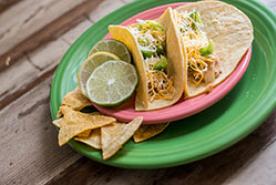Be prepared for emergencies with a guide tailored for kidney disease patients. Learn to manage your treatment, maintain supplies, and follow safety tips during crises.
Natural disasters (blizzards, earthquakes, floods, hurricanes, tornadoes, etc.) or electrical power blackouts can disrupt healthcare services, such as dialysis treatment. The aim of the information on this website is to help you prepare for possible emergencies. By knowing what to do and preparing ahead, you can feel secure if an emergency should occur. You may want to print this information along with the emergency meal plan, and keep it in a place where you can find it easily. Leave copies at your workplace and at home and take it with you when you travel. Tell your family members where it is.
Planning for an Emergency
- Keep a current list of your medicines and dosages and carry it with you. Also, keep a two-week supply of medicines and diet needs at home. Check expiration dates every so often and replace items when needed. If you work outside the home, keep an extra supply of medicines at your job.
- You should have a landline phone in your home; choose a model and phone service that will work if you lose power (for example, cordless phones and cable phone service may not work in a power outage). You may or may not lose cell phone service. Learn how to send a text message. Texts use less battery power and are more likely to go through when the cell network is very busy. Learn ways to keep your cell phone charged longer. If you have a car, you can also use a car charger to recharge your cell phone.
- Keep a copy of important medical and insurance information at your home and at your job, if you work outside the home. Update the information often. If needed, ask your healthcare staff for this information.
- You should get and wear a medical emblem. This has very important information about your medical condition and treatment and tells medical staff about your special needs. If you need help in getting one, ask your social worker.
- Keep the following emergency supplies in a safe place (contact your local police or fire department for a complete list of items needed):
- A battery-powered AM/FM radio and extra batteries. Find out what the emergency broadcast radio station is in your area for up-to-date information on what’s happening.
- Flashlights with plenty of extra batteries or candles and matches. (Remember never to use matches until you have checked for gas leaks.)
- A first-aid kit.
- A fire extinguisher. Check regularly to make sure it is full.
- An emergency phone list.
- Ask the staff in your unit for a copy of their disaster plan and read it carefully.
Hemodialysis
If a natural disaster occurs in your area, stay indoors and listen to your emergency broadcast radio station for information about what to do. Your local National Kidney Foundation office may be able to help you find out if your regular dialysis unit is open. If your unit is not open or if you are not able to reach the unit, you may be able to dialyze at a different unit. Make sure you have the names, locations and phone numbers of back-up dialysis units and hospitals in your area. Since regular community transportation services may not be working, be ready to make other arrangements for getting to dialysis. Contact the police or Emergency Medical Services (EMS) to tell them that you need help.
In a large-scale disaster, you may not be able to get to a dialysis unit for a period of time. You should be ready to manage without dialysis for a few days by following an emergency diet (see “Emergency Meal Planning” below).
Dialysis Emergency Procedures
In a severe disaster, dialysis staff may not be able to continue your individual dialysis schedule and orders. They may need to use emergency procedures, which may include a standard dialyzer and a shorter treatment time. Dialysis staff will make every attempt to give you the best treatment possible.
Your dialysis unit has a procedure for emergency evacuation. The dialysis staff will help you get off the dialysis machine as quickly as possible. The staff will direct or help you to a chosen gathering place.
If no one is available to help you, your dialysis unit has an emergency procedure you can use to get off the dialysis machine safely. Speak to the dialysis team at your unit about the steps for getting yourself off the dialysis machine in case a situation occurs, and the staff cannot help you.
Preparing for an Emergency for Home Hemodialysis
- Keep a list of dialysis units in your area at home and at your workplace.
- Keep a two-week stock of dialysis supplies. Check expiration dates regularly and replace supplies when needed.
- Register with your local water and power companies, so they will be aware of your need to get service restored as soon as possible.
- Learn to be comfortable taking yourself off the dialysis machine in an emergency.
- During the emergency, if you lose power while dialyzing, follow the directions for stopping dialysis given to you by your home training staff.
- If you are not able to continue your treatments at home during the emergency, contact the home training staff to make other arrangements.
Peritoneal Dialysis
CAPD (continuous ambulatory peritoneal dialysis) or CCPD/APD (continuous cycling/automated peritoneal dialysis)
- Keep a two-week stock of peritoneal dialysis supplies. Check expiration dates regularly and replace supplies when needed. If you use an ultraviolet device, keep the battery charged.
- Include in your emergency medication pack a five-day supply of the antibiotic that your doctor orders for peritonitis. If a disaster occurs, it may be difficult to keep a clean environment and your chances of getting peritonitis may be higher.
- Register with your local water and power companies, so they will be aware of your need to get service restored as soon as possible.
- If you use a cycler, you should also know how to do CAPD exchanges in case you are unable to use the cycler.
- If you use a cycler and you lose power while dialyzing, follow the instructions given to you by the PD staff for stopping dialysis in an emergency.
Transplant Recipients
- Know your medicines and keep a two-week extra supply in their original bottles, if possible. If you need to evacuate, original bottles will give the necessary information when you get to your destination.
- A backpack with a waterproof pouch packed with key items (listed in #3 below) should weigh about 10 pounds. Wear good shoes when you carry this backpack, leaving your hands free if you should need to evacuate.
- Pack key information (medicine list, doctor, transplant coordinator, pharmacist, insurance) in a waterproof bag; you can add to the key information as specific to your health. Pack several 8-ounce bottles of water, a hand-operated can opener, hand sanitizer, travel-size toiletries, disposable wipes, toilet paper, sunscreen, a miniature flashlight, a mask, gloves, a thermometer, batteries, matches and candles. Stock disposable eating utensils and canned and packaged rations of foods, such as peanut butter, saltines, tuna, juices—several days’ worth, if possible. Include some dry clothes. If you have diabetes, follow guidelines on diabetic food choices. Bring any supplies you might need to treat diabetes or other conditions.
- If you are in a shelter or in contact with emergency personnel, let them know you are a transplant recipient and need to take medications regularly and on time. If possible, limit your exposure to infections. Sanitizers, gloves and a mask can help. Using common sense and remaining positive will also help.
- Ask your transplant healthcare team about precautions, additional medications, and preparations that they recommend. You can find a list of transplant centers around the country from the United Network for Organ Sharing (UNOS) 888.894.6361.
Diabetes
- Make sure you have extra insulin and syringes.
- Keep a supply of sugar, honey, instant glucose or glucose tablets, low-potassium juices, sugared low phosphorus beverages and hard candy in case of low blood sugar reactions.
- Keep extra batteries, so you can check your blood sugar if you have a blood sugar monitoring device (glucometer).
- Ask for a copy of Emergency Meal Planning for Diabetics by calling the NKF at 800.622.9010 or visit this page.
Special Things to Know in Different Kinds of Disasters
Learn what to do in special situations such as blizzards, earthquakes, floods, hurricanes, tornados or terrorist attack. You may find this free booklet helpful: Are You Ready from the Federal Emergency Management Agency (FEMA) available at 800.480.2520 or download a PDF at https://www.fema.gov/pdf/areyouready/areyouready_full.pdf.
Here are some other points for kidney patients to remember (if you have more questions, you should speak to the healthcare team at your dialysis unit or transplant center. You can also contact your local National Kidney Foundation):
- Plan ahead. Have emergency supplies and extra supplies of your medicines and diet needs on hand.
- Stay indoors and listen to your emergency broadcast radio station for instructions about what to do.
- If you receive in-center hemodialysis and you are unable to get to your dialysis unit, contact police or Emergency Medical Services (EMS) to advise them of your need for assistance.
- If you must go to a shelter, tell the person in charge about your special needs as someone with kidney disease.
- If you are a dialysis patient and you must miss dialysis, begin your emergency meal plan.
- If you must go to a shelter, tell the person in charge about your special needs as someone with kidney disease.
Emergency Meal Planning for Dialysis Patients
An emergency meal plan is for you to use during an emergency or natural disaster when you must miss dialysis. This diet is stricter than your usual diet. The restricted plan controls the buildup of things like potassium, phosphorus, urea and fluid, which can be life threatening if you miss several dialysis treatments due to the emergency.
Emergency Meal Planning for Dialysis Patients
Emergency Meal Planning for Dialysis Patients with Diabetes
Diet Tips for Dialysis Patients in an Emergency
If you must miss dialysis, your well-being may depend on following a very restricted diet, until you can dialyze. Here are some helpful tips:
- It is very important to follow your diet according to the emergency meal plan (see links above).
- If you need to eat in restaurants, remember to make healthy choices.
- Be careful when eating foods that may spoil to avoid food poisoning. If a jar or can is opened, do not keep it longer than four hours unless refrigerated.
- It is best to eat refrigerator-stored foods first. If you store food and water to plan for a disaster, replace often to ensure freshness.
- Limit protein to one-half your current intake. For example, if you eat two eggs for breakfast, decrease to one egg.
- Keep five gallons of distilled water on hand for mixing milk or juice. Mix small amounts of only four ounces at a time.
- Limit fluid intake to two cups or 16 ounces per day.
- Do not use salt or salt substitutes with your meals. Use salt-free foods, whenever possible.
- Avoid high-potassium foods. Limit the kinds and portion sizes of fruits and vegetables eaten to those listed in the emergency meal plan.
- Have ready-to-eat foods on hand. Remember that canned foods are often high in sodium. Check labels for sodium and potassium content.
- Consider using coolers, thermos containers or a propane stove or grill to help with food storage and preparation.
- Have a supply of disposable dishes, utensils and paper napkins on hand to lessen the need for washing dishes. Throw away after use.
- Store a hand-operated can opener, measuring cups, and a scale in your supplies.
- Wrap food scraps securely for disposal to reduce odor.
- If you have diabetes, keep instant glucose tablets, sugar, hard candy, low-potassium fruit juices, or sugared soda pop on hand to treat low blood sugars. Avoid high- potassium fruit juices (orange juice).
- Keep an extra copy of your emergency diet with your food supplies.
Download a PDF of the NKF Emergency Planning Guide
If you would like more information, please contact us.
© 2014 National Kidney Foundation. All rights reserved. This material does not constitute medical advice. It is intended for informational purposes only. Please consult a physician for specific treatment recommendations.

















